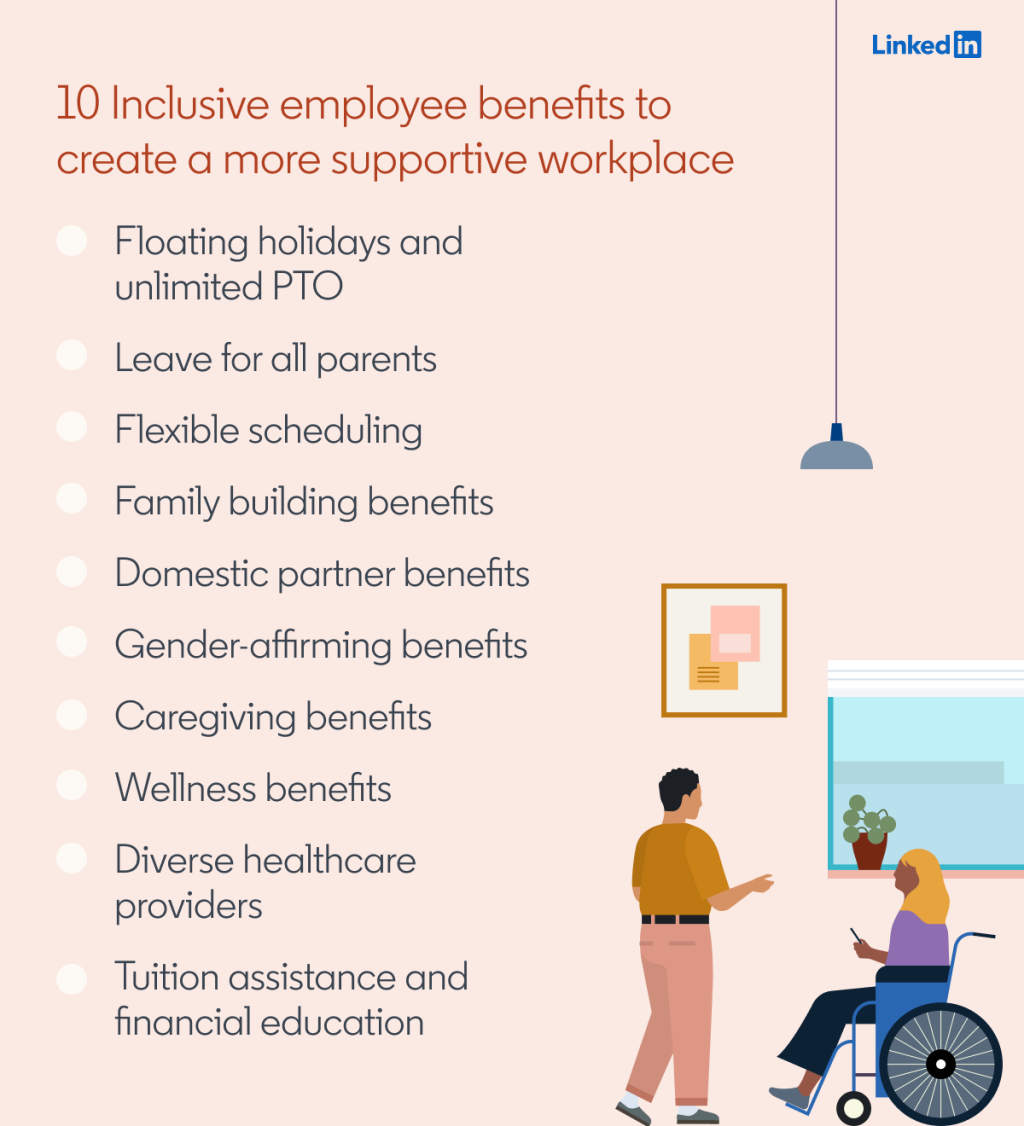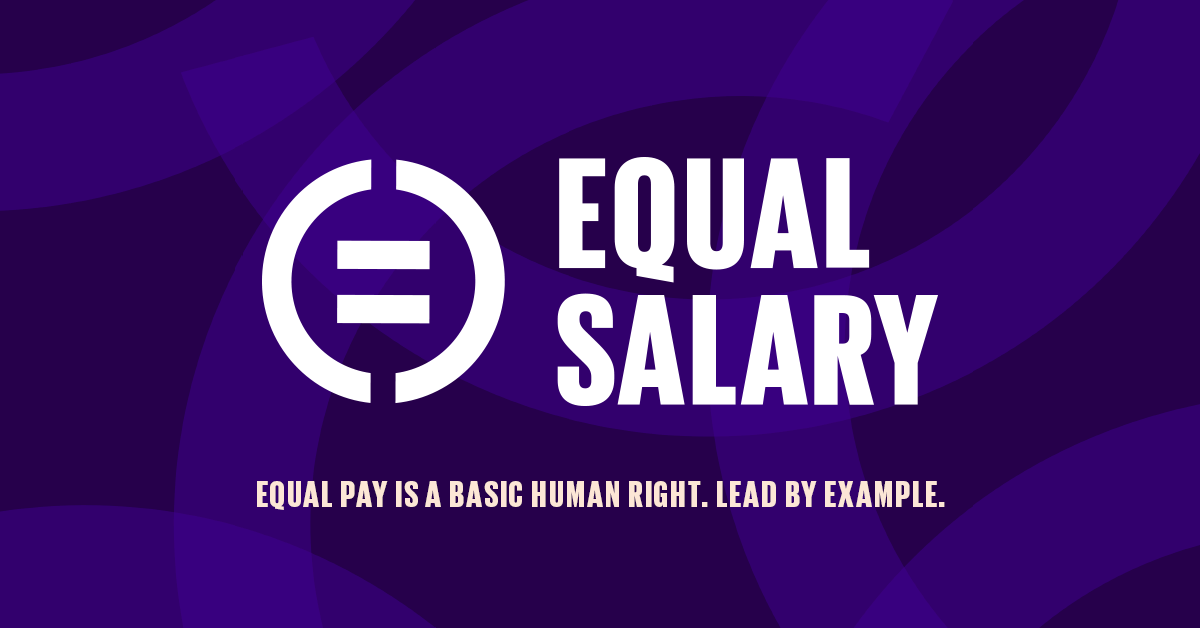Equality in compensation and benefits.
A final important element in the development and retention of talent is offering fair and equal compensation to all your employees.
In many industries worldwide, not all employees get equal compensation. If you want to work on DEI, it’s essential to implement an inclusive and consistently applied compensation & benefits policy. There are different pay or wage gaps, such as the gender pay gap, the racial pay gap, the motherhood pay gap, etc. Data from the OECD show that the gender wage gap, for example, is a global issue.
If your company is serious about DEI, it must address potential wage gaps or inequalities. You will need executive buy-in and commitment to implement and adhere to equal compensation decisions.
There are four main actions to take when working on your company’s comp & benefits policy:
- First, evaluate your compensation & benefits policies.
- Second, check your performance appraisal and career development process.
- Third, structure reward systems and make them transparent.
- Introduce inclusive benefits.
Action 1: evaluate your current compensation and benefits policies
Action 1: Evaluate your current compensation & benefits policies.
You might think your compensation & benefits strategy is fair and transparent but is that the case? Committing to equal pay is of the utmost importance to keep all your talent, especially those from underrepresented groups. It’s therefore essential to evaluate the status of your comp & benefits strategy. That might lead to discovering issues you were unaware of or uncomfortable conclusions. First, it’s necessary to assess and map your current strategies thoroughly. Then, consider taking the steps below:
- Have an overview of the following elements. It will help you map out your current strategy and policies.
- What are the components of your compensation packages (e.g., base wage/salary, bonuses, equity, benefits, etc.)?
- Are parts of your compensation packages negotiable? Which parts? Is it necessary to make them negotiable?
- Who makes the compensation decisions? Are they convinced of the importance of equal compensation?
- Who makes the decisions on performance appraisals and career advancement? Are these people trained?
- Collect data on potential pay gaps and perform a pay equity audit. An audit will allow you to identify pay gaps for specific groups of employees you are currently not aware of. Next, it’s paramount to uncover the causes of these pay gaps to remediate them. Identifying the gaps is not enough. You need to find the reasons for differences in pay between groups of employees.
Regularly audit your pay systems and continue making the necessary adjustments.
- Include questions on (perception) of fair compensation in your DEI scan or ask about this in exit and stay interviews. You gain insight into how your employees perceive your compensation policies. It might reveal that, although fair, your strategies aren’t sufficiently transparent. In that case, you must prioritize communicating your compensation & benefits policies.
- Check your compensation & benefits strategy for “risky practices.” It’s essential to ensure you do not (unknowingly) risk a claim for unequal pay. This UK source provides some examples of potential claims for unequal pay. Make sure your payment system is compliant with the necessary legal regulations.
- Look at the EQUAL-SALARY certification initiative. It focuses mainly on closing the gender pay gap and allows organizations to verify if they pay their female and male employees equally for the same job or a job of the same value.
Action 2: check your performance appraisal and career development process
Action 2: Check your performance appraisal and career development process.
Inequalities in wages are often related to disparities in career advancements. It’s, therefore, necessary to also check your performance appraisal system to ensure all your employees receive the same career opportunities.
One of the reasons companies might have a high overall gender pay gap is because of the underrepresentation of women in leadership positions. It’s then essential to check your career development process and tackle performance appraisals.
For more tips on organizing bias-free performance reviews and improving your career development process, click here.
Action 3: structure reward systems and make them transparent
Action 3: Structure reward systems and make them transparent.
You can undertake several activities to have a more structured and transparent compensation & benefits policy. Consider your organization’s size, strategy, and culture when implementing some of the actions below. In addition, make sure that any approach you design complies with your country’s legal obligations and framework.
A first step to ensure you have a fair compensation system can be to benchmark your wages with your competitors in the same region, industry, labor market, etc. It allows you to check if you are not underpaying your employees compared to competitors. Benchmarking can also be essential when setting pay or wage grades and the following pay ranges (as described below). Benchmarking can also warrant more transparency in your wages, especially when negotiating with new job candidates. You can buy salary surveys to benchmark your company’s wages.
If you are not doing so already, consider using job evaluation methods to create a wage or salary structure.
Job evaluation means systematically comparing the jobs in your organization to each other to determine the relative worth of each job. Several systems evaluate jobs, such as job classification, banding, the point method, the Korn Ferry Hay Group Guide Chart-Profile Meth, etc. Whichever approach you use, the main idea is to determine the relative worth of each job so that you can attach pay or wage grades to groups of jobs.
A pay grade comprises a group of jobs with approximately the same difficulty, responsibility, etc. Pay grades are then further divided into pay ranges. A pay range shows the steps or levels within each pay grade. For example, a step can be based on the number of years’ experience, necessary degree, skills, etc. You can find more detailed information on job evaluation here. You can go through this process or use a consultancy agency to guide you through the job evaluation process.
The main advantages to using pay grades are:
- Transparent and equal system for all employees doing the same job.
- It’s easier to communicate a pay grade system to all employees, increasing compensation transparency.
- It shows employees their growth path in terms of compensation. Further transparency on how to reach the next step in a pay grade means that employees are motivated and know how to grow in their careers (which is good for retention).
Try to avoid using “long” pay grades. There are so many steps in the pay grade that the difference between the minimum and the maximum can be huge. Large pay grades offer more flexibility to your system but can also cause inequalities that can demotivate employees.
Lastly, when you have a salary structure, stick to it. Avoid exceptions and use the one system for all jobs and all employees.
Transparency about your compensation & benefits strategy is paramount. If you have a salary structure, communicate this to all your employees. Everyone in your organization should know where to find information on this structure and how they can advance in their pay grade.
Consider mentioning salaries in your job ad or be transparent about this early in the recruitment and selection. That way, you increase the trust of job candidates and reduce salary gaps. It can also lead to a more positive candidate experience or journey. Applicants won’t face the unpleasant surprise of a lower-than-expected job offer at the end of their application process. That often leads to competent job candidates declining offers.
Most inequalities in compensation are either caused by inconsistencies in the use of salary structures or by allowing individual job candidates to negotiate their compensation package fully. If this is possible, avoid salary negotiations and stick to your salary structure and predetermined benefits package. Instead of negotiating for every role, present a persuasive offer based on the salary structure. In the proposal, you can explain the philosophy and process behind your salary structure and precisely what the offer entails (each part of the compensation). Applicants aren’t just looking for cold hard cash anymore, so it can be good to include future opportunities and gains that might come with the role in the offer.
If you can’t avoid negotiations, consider these two actions:
- First, have a clear budget for hiring managers and recruiters that they can use to negotiate with candidates. Communicate that they must stick to this budget for that specific role.
- Identify those parts of the compensation package that are up for negotiation and those that are not. For example, allow applicants to negotiate about rewards that might be important to them but that don’t have that much monetary value (such as vacation days or flexible working).
Some exciting sources to help you:
- Three steps smaller organizations (fewer than 50 employees) can take are described here.
- Lever’s description of fair compensation, you can download their DEI guide for free here.
- Checking for risky practices when setting a pay strategy.
Action 4: introduce inclusive benefits
Action 4: Introduce inclusive benefits.
Next to creating a fair, equal, and transparent compensation policy, it can be good to focus on offering rewards and benefits that are inclusive or that can contribute to building an inclusive culture. Two key things to consider when implementing inclusive benefits:
- Ensure these benefits are available to all your employees in all jobs across all locations.
- Implement those benefits that your employees want and need. Talk to your Employee Resource Groups (ERGs) to ensure you hear all employees’ voices on what benefits and rewards they might prefer.
This article explains how to build inclusive benefits packages.
Below you can find some examples to inspire you. Here you can find a more detailed explanation of those benefits.
- Floating holidays and unlimited Personal Time Off (PTO).
- Leave for all parents (including adoptive and foster parents).
- Flexible scheduling (e.g., flexible hours, 4-day workweek, etc.).
- Family building benefits for all families (including LGBTQIA+ couples with or without an infertility diagnosis).
- Domestic partners’ benefits.
- Gender-affirming benefits (including transgender-inclusive benefits).
- Caregiving benefits for all caregivers.
- Wellness benefits.
- Having diverse healthcare providers in your network (so employees can take to healthcare workers they identify with).
- Tuition assistance and financial education.
Other inclusive benefits might include the following:
- (more) opportunities for remote working.
- Reimbursement for costs of remote working (e.g., internet costs, heating, electricity costs, etc.).
- A budget or reimbursement for employees to install a home office (e.g., to buy an ergonomic chair and desk, to adjust a home-office space for employees with a disability).
- Reimbursement of moving or transport costs.
- Introducing Employee Assistance Programs or EAPs to support employees’ mental health.
- Using cafeteria plans (which allow employees to choose benefits themselves to a certain degree).
Become a DEI expert.
This is a collection of articles that allows you to take a deep dive.

How to build an inclusive benefits package for a remote workforce | Carrot Fertility

If Not Now When? Report: Action for Black Inclusion in Business – If not now, when?





